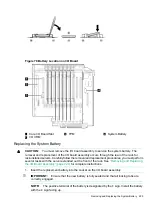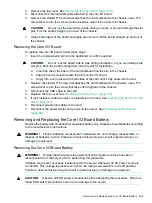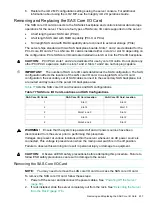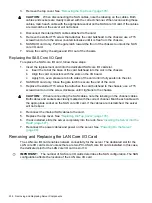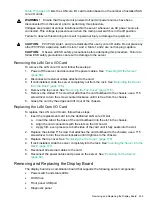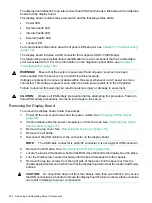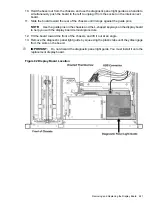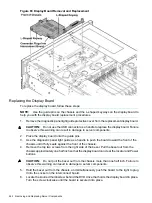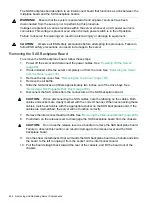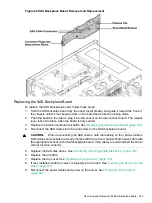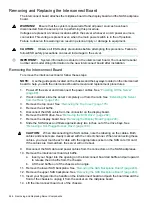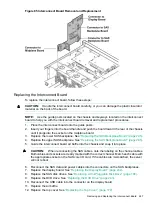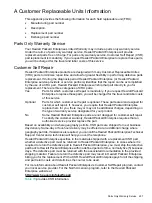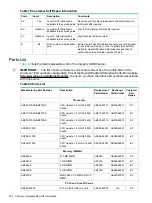
7.
Install the diagnostic panel light guide.
a.
Align the diagnostic panel light guide tabs with the slots on the display board.
b.
Push down firmly on the light guide until it seats onto the board.
8.
Replace the top two right-side bezel screws.
9.
Replace the DVD drive. See
“Replacing the DVD Drive” (page 203)
.
10. Reconnect the USB cable into the connector on the display board.
11. Replace the air baffle.
12. Replace the top cover. See
“Replacing the Top Cover” (page 179)
.
13. If rack installed, slide the server completely into the rack. See
“Inserting the Server into the
.
14. Reconnect the power cables and power on the server. See
Removing and Replacing the SAS Backplane Board
Serial-attached SCSI (SAS) is a new, faster version of the industry standard SCSI technology.
Although SCSI is a proven technology, its parallel data communication model restricts it from
providing the speed and scalability required for modern data transfer and storage. In a parallel
data communication environment, multiple devices share one bus; all data travels over the same
cable and through the same port.
SAS provides serial, or point-to-point, data transfer. A point-to-point architecture means that each
device has its own private bus, cable, and port. This architecture improves the reliability and
availability of data, and greatly enhances data transfer rates. Current data transfer rates are 3
Gb/s. Additional features of the SAS technology include:
•
Full-duplex capability (all data reads and writes occur simultaneously)
•
Automatic device discovery and configuration (each device is assigned a unique SAS
address)
•
Thin cables and small connectors (assists with cooling and ease cable management issues)
•
Increased scalability (expanders enable support for thousands of SAS devices)
The server ships standard with two SAS backplane boards. The primary SAS backplane board
connects to the primary SAS core I/O card in slot 1. If there are two SAS core I/O cards, the
secondary SAS backplane board connects to the secondary SAS core I/O card.
IMPORTANT:
The number of SAS core I/O cards determines the SAS configuration. In a single
SAS core I/O card configuration, the secondary set of SAS cables connect to the secondary SAS
backplane, but are routed and lay loose in the server I/O backplane area.
lists the SAS configurations.
Table 78 SAS Configurations
SAS Cables
Connected
SAS Cables
Shipped
SAS Backplane Boards
SAS Core I/O Card
Location
SAS Core I/O
Cards
2
4
2
Slot 1
1
4
4
2
Slot 2
2
Removing and Replacing the SAS Backplane Board
243

